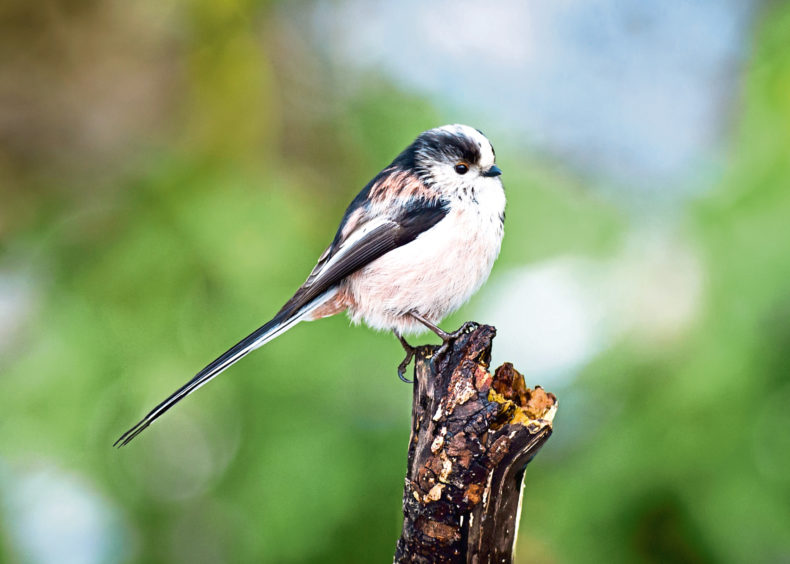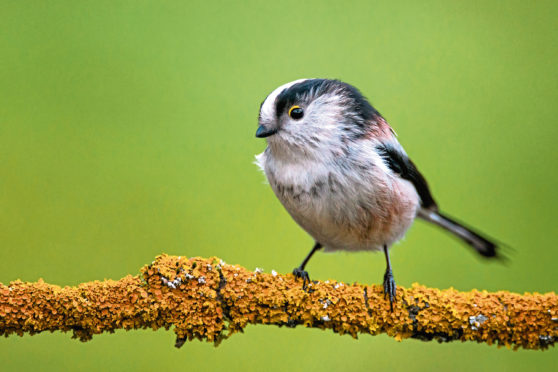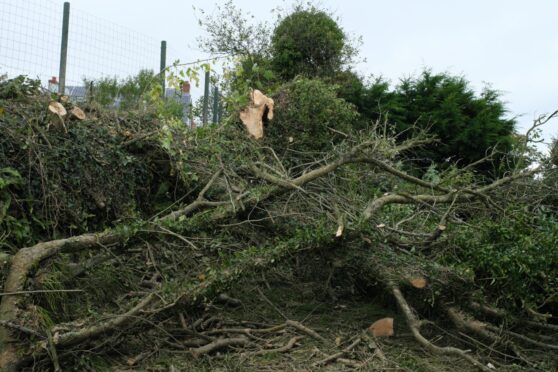Long-tailed tits are attractive little birds, which in spring build intricate and well-camouflaged domed nests made from feathers, moss, fur and cobwebs, and covered in lichen.
A distant chirruping, an excited chatter, that gradually became louder against the backdrop of coppery beeches and yellow-hued hazels here at the Hermitage near Dunkeld. Soon they were upon us, a mixed flock of long-tailed tits, blue tits and coal tits, scouring tree branches and twigs for food.
They were gone in a flash, a pack of nomads prospering in the companionship of each other. It might seem strange for different species to group together like this, but it is an entirely sensible strategy at this time of year. Like a game of Russian roulette, if a sparrowhawk comes upon you, then the cards are stacked in your favour, as the chances are this aerial pirate will catch another bird in the flock.
Furthermore, a flock has more pairs of eyes to detect early danger, and as the wee birds bound and scatter through the trees, a hawk can easily become confused by the myriad of fluttering, thus finding it harder to focus on one target.

With the air quiet once more, save for the churning rumble of the nearby River Braan, a scene of vibrant autumn colour unfolded around us. It was like being in a fairy tale forest, a magical place of rushing burns, towering trees and an ochre carpet of fallen leaves.
We ventured down to the thunderous Black Linn Falls, a tumultuous cauldron of spewing white-frothed water. I had heard that salmon had been seen jumping here over previous weeks, but we failed to spot any. As we watched in awe at the foaming torrent, it seemed unlikely to me that any fish could ever ascend these falls, such is their height and ferocity. It is the instinct to breed that drives them on, unaware of the near futility of their attempts to pass this monumental hurdle.
Over recent weeks, I have been watching salmon and sea trout ascending a weir on my local river – a mere pussycat of an obstacle compared to the Black Linn Falls. The fish leap in truly spectacular fashion, landing half-way up the sloping weir, before then having to wriggle their tails frantically to get over the top. Most don’t make it on their early attempts, but through sheer tenacity, the majority eventually succeed.
I have particularly enjoyed watching sea trout on this weir, for these wonderful fish are a real enigma. It is the same species as the freshwater brown trout, but a migratory one which spends much of its time in the sea, fattening-up on the rich marine feeding and returning to our rivers in the summer and autumn.
When they first begin to run our rivers in summer and when fresh in from the sea, they are magnificent to the eye, silver-flanked and oozing with power. Now in autumn, they are darker coloured as they head to their upstream spawning grounds: marvels of nature totally consumed by the insatiable urge to procreate.










